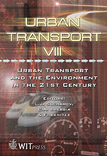Emissions At Different Conditions Of Traffic Flow
Price
Free (open access)
Transaction
Volume
60
Pages
10
Published
2002
Size
605 kb
Paper DOI
10.2495/UT020561
Copyright
WIT Press
Author(s)
J. Veurman, N.L.J. Gense, I.R. Wilmink & H.I. Baarbé
Abstract
Although it is widely assumed that congestion causes an increase in exhaust gas emissions, it has always been difficult to quantify this relationship. The project Emissions and Congestion investigated this relationship by simultaneously measuring traffic conditions and emissions. Emission factors were derived for different traffic conditions on motorways, ranging from free flow to heavy congestion. The results clearly indicate that there are significant differences in emissions and fuel consumption for different types of traffic flow. Heavy traffic dynamics, shortcut traffic, heavy congestion and high speeds lead to significant increases of regulated emissions and fuel consumption of motorway traffic. Efforts to reduce congestion and traffic dynamics (by traffic management measures) should be concentrated on specific routes or sections with frequent occurrence of heavy congestion and a large share of heavy duty traffic. These are the motorways in the conurbations. Tens of percents of reduction in emissions are possible. The resulting improvements on local air quality can be significant. Lowering the speed limit to 100 km/h on all sections of Dutch motorways can significantly improve emission levels (most of Dutch motorways have a speed limit of 120 km/h).
Keywords





